NEVER-SEEZ
With regards to your recent blog post, “More Boat Tips: Unsticking Stuck Nuts and Bolts,” it makes a mess, but I always use Bostik Never-Seez when ever I put something back together on my 20-year-old boat. I can attest that even stainless bolts through aluminum threads exposed to the salt water environment always free up with a minimum of effort. I’ve thought many times about going over the whole boat and Never-Seez-ing every bolt I can find, but alas, there are always more pressing projects to do.
Kent Robertson
Kristy, Amel Supermaramu ketch
St. Michaels, MD
While most of us are hopefully out sailing this summer, we know that many sailors are busy with system upgrades, do-it-yourself projects, and the usual marine maintenance adventures. Here are some archive articles we think will help you tick off the tasks on your to-do list.
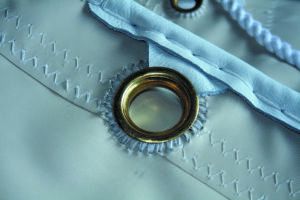
SAILS & HARDWARE
In the market for a new mainsail or hardware? Check out the August 2011 article on how to choose a new cruising main and the June 2013 review of mainsheet tackle. For hardware seekers, we recommend the test reports on ratchet blocks (May 2009), snatch blocks (August 2008 and August 2007), and rope clutches (March 2009, June 2009, and November 2014). In August 2009, we looked at genoa furlers, and in October 2015, we compared stanchion-mounted fairleads for roller furling gear. You’ll find these articles and more in our three-part ebook series, “A Look at Sails,” which is available at www.practical-sailor.com/books.
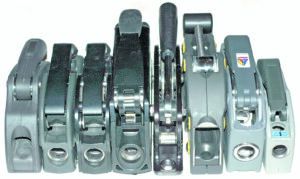
DO-IT-YOURSELF
For the DIYer, we have a slew of possible spring projects worthy of your time. Cruisers will want to look into the trysail-track refit report (May 2012) and the blog post on how to build your own custom medical kit (Practical Sailor, July 2014).
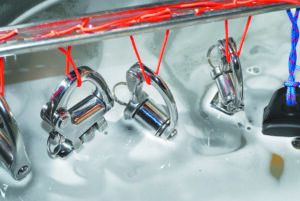
For the maintenance-minded, there’s a comprehensive look at gelcoat restoration (Inside Practical Sailor blog, Sept.13, 2017) and articles on DIY blister repair (February 2011) and re-doing your teak decks (June 2011).
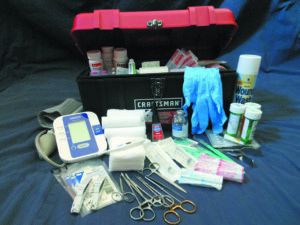
MAINTENANCE
Wondering what the best products are for those spring-summer cleaning jobs? Be sure to read our test reports on boat soaps (January 2013), waterline stain removers (April 2014 and November 2007), isinglass/clearvinyl cleaners and protectors (May 2014 and March 2009), and hull waxes and polishes (Inside Practical Sailor blog May 12, 2015 and July 2014 PS issue).
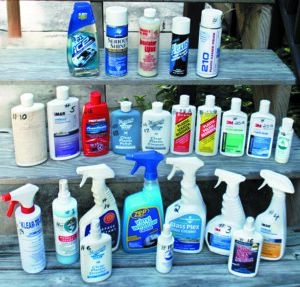
ANCHORING EBOOK
Our four-volume ebook series on anchoring continues to be one of the most popular downloadable ebooks in our library. “Anchoring—The Complete Series,” is a multi-part ebook series that offers over 15 years of comprehensive anchor test reports in one publication. Find it at www.practical-sailor.com/books.
DEEP CREEP FOR STUCK BLOTS
Working in the “Fishing Reel Service and Repair Department” at a tackle store, we come across corroded, frozen, rusted screws, nuts and small parts daily. We’ve had good luck using JB Blaster in the past but, when we have to apply a propane torch as well, man does that stuff stink. This past year we tried a new product from Seafoam Company called “Deep Creep”. Works fantastic and smells good whether we use the propane torch on it or not. It’s our “go to” spray now, we use it every day.
Richard Lord
Sarasota, FL
FLASHLIGHT ACHILLES HEEL?
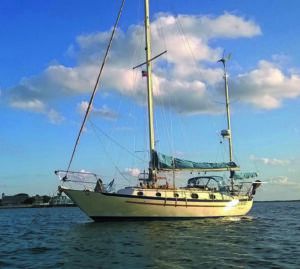
mizzen mast, home to wind generator, radome, and more.
With regards to your recent eblast of the archived article on LED lights (see PS December 2007, “Practical Sailor Sheds Some Light on LED Lights”), batteries have gotten much better, bulbs have gotten hugely better, and casings and lenses are better; all great news. But the bugaboo is the switch. They are still awful, and anyone who has owned a few of them while living on a boat will know that you always need three of them in every use location because two of them won’t work when you need them. Those damnable little switches seem like the simplest part but are the first things to fail after a few months. One must keep replacing them because the salt and water and humidity and general fungus of the universe get into the switches and kill the whole device.
Your test procedure did not delve into mean time to failure (MTTF) longevity issues, so your results are fine as far as they go. But the lifetime of the switches is critical to the whole product, and thus critical to the cost:benefit ratio. No one should purchase flashlights without being aware of this failure point.
Stephen Judd
Minuet, Pacific Seacraft 37
Currently based in Caribbean
Your point on mean time to failure is well taken. Many of the products we test are put into use on our test boats, and flashlights are notorious for not making the grade. Typically the failure point is the spring contact in the battery compartment, often due to neglect (see “Distress Beacon Update”).
The switch is another common failure point. As we described in our 2007 report:
Simple switches tend to be the most reliable, and it can’t get much simpler than one O-ring-sealed screw cap that both opens the battery port and also functions as the on/off switch. Most of the aluminum and plastic flashlights we tested used this type of switch, while the Inova units also incorporated a push-button in the end cap that allowed intermittent light or signaling. Dr. LED, Streamlight, Sea Fit LED and Underwater Kinetics LED zoom all incorporated pushto- click switches into their housings. One switch, the UK zoom light switch, malfunctioned during testing . . .The toggle switches built into the waterproof Pelican Light and UK’s SL4 models served well during initial testing.
Most of the flashlights from that test are still operating, although few have seen very hard use. Among those that are still operating, the screw-cap type described are still going strong. This is a two hand operation (a drawback) and introduces the potential to leave the light on — or unscrew the cap so far that moisture enters, although we have wasted batteries doing the former, water getting past the o-ring has not yet been a problem. We’ve grown attached to the combined push button/ twist-on “tactical button” on the 3.8W Inova Bolt, and have yet to find a serious fault in this approach, as long as the contacts are robust.
The toggle switches have had some trouble. The UK SLR bit the dust due to water intrusion, possibly through the lens, and the Pelican battery contact is inconsistent— we now have to bang on the battery cover to get it to turn it on. We noticed the new Pelican 3345 has returned to a screw-on battery access. And we look forward to trying this new light, which has some interesting features, including the option to clip the light to your shirt, PDF vest, etc. and have a handsfree “miners”light. Sadly, based on a quick online search, it appears switches are becoming more complex, not simpler.
LED FLASHLIGHT BATTERY ALERT?
I like LED flashlights for their small size, bright light, and long battery life. One downside that I don’t see discussed is the fact that they don’t give you any warning when the battery is getting low, the output just goes from working fine to dead.
Old fashion flashlights with tungsten bulbs and carbon-zinc batteries would gradually get dimmer, providing plenty of warning that its time to change the battery. You could shake a dead light or bang it on the bulkhead and get a very dim light that was enough to perform a crucial task like opening a combination lock after returning from shore. Since switching to LED flashlights I started carrying spare AA batteries in my shore bag and in a pocket of my foul weather gear.
Recently, several lights have appeared on the market that have low battery indicators built in (like the Dorcy 250-Lumen Weatherproof Tactical LED Flashlight with Battery Indicator Light, Black (41-4297) or the Coast XP11R). I have postponed upgrading my flashlights until I find a suitable replacement with this feature, as I expect that this feature will “trickle down” to the less expensive lights.
The other important feature is battery type. My GPS, VHF and all my flashlights use AA cells. The AA is only a little more expensive than a AAA but has more than twice the power. I would rather have a larger flashlight with longer life and stick with a standardized battery type.
Stephen Clark
via www.practical-sailor.com
CVS “D” cell + ABS plastic = survival SNAFU
![]()
In last month’s report on the electronic visual distress signalling devices (eVDSD), we noted that the largest light in our group, the Orion 547 suffered a battery compartment failure, which Orion quickly remedied with a replacement cap. We’ve since dug a little deeper into the cause.
The most common reasons for battery corrosion are that they were left dead or that they are off-brand. The batteries in the Orion 547 were not dead, they were CVS brand. One had leaked very slightly, the other not, and the leakage had not reached the upper end of the beacon. The beacon still worked properly when the cap was pressed into place.
The batteries had not swelled or grown significantly longer; they measured a total (2 batteries) of just 0.03-inch longer than new Duracell replacements and 0.05 shorter than the D battery specification of 2.42 inches each. Like most flashlights, there is a spring at the butt end that should easily accommodate the 1/8- to 3/16-inch (0.125 to 0.1875) of variation in length. In fact, when the cap is screwed into the stop, 3/8-inch of space remains for the spring. The spring measures 0.8 inches tall and requires 7 pounds of pressure to compress into the available space.
When fully closed, the base contact plate in the cap must press against a strip that conducts power to the light. This strip projects 1/16-inch beyond the end of the barrel into a space less than 1/16-inch deep that also contains the end plate. Any small variation in manufacturing tolerance can result in a considerable point load on the cap. This is where the crack started.
The most plausible explanation for the cap failure is that sustained pressure against this strip, combined with exposure to caustic electrolyte, led to environmental stress cracking, which is a known problem with ABS plastic. It can resist stress and it can resist caustic, but not combined, which is why ABS pipe is no longer widely used in homes
































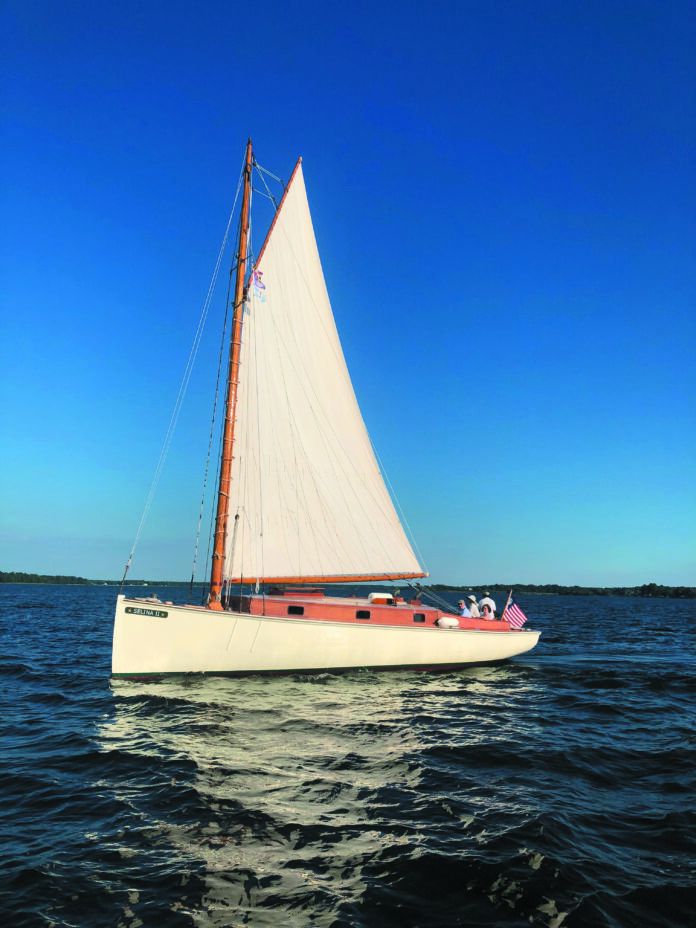







To Kent Robertson’s point about “Unsticking Stuck Nuts and Bolts”, I’ll see your Never-Seez, Ken, and raise you one. To prevent corrosion and “Seezing” i prefer to use a Loctite adhesive product. Same concept, isolating and sealing the metals. The difference is N-S is a lubricant, which is not a problem for many applications, but might be for others. Loctite, on the other hand, will lubricate while its liquid, seal between surfaces, then cure to secure the joint. Locked in place. You just have to be careful which grade of Loctite you use; red is permanent – extremely difficult or impossible to remove. Blue is “medium strength”, tough, but removable for e.g. 1/4″ stainless. Purple is low strength – specially for small screws. Any of them will give the protection of sealing, with some level of locking at the same time (insider tip; Loctite pipe sealant is a gel, with even lower strength than purple. Sealing, but with a gentle locking component. Just be careful of the low cost imitators – they’re not the same). Caution, most Loctite products don’t work on plastic parts, and may be incompatible with some (e.g. will destroy PVC). Best to stick with metal parts only
Full disclosure: I started my career selling Loctite adhesives about the same time i bought my first cruising boat, a new 1988 Pearson 31. I’ve done both for a very long time.
Dan Oberle
CATHERINE MARIE, Catalina 42
Punta Gorda FL
Practical Sailor has told many times about the corrosive bonding between aluminum and stainless steel, but I cannot find a solution to break the bond when it happens. Specifically my 2013 Yamaha 9.9hp outboard needs a water pump change so I need to remove the lower housing. I removed the 4 nuts from the SS studs with no issue; however the aluminum housing will not budge after beating it as hard as I dare and trying chisels to wedge the housings apart. I even turned the outboard upside down (after removing the oil) so I can soak the studs in PB Blaster for a few days. Still no success. The SS studs seem forever bonded to the aluminum housing. Apparently the marina that serviced it 3 years ago did not isolate the metals. Any suggestions?